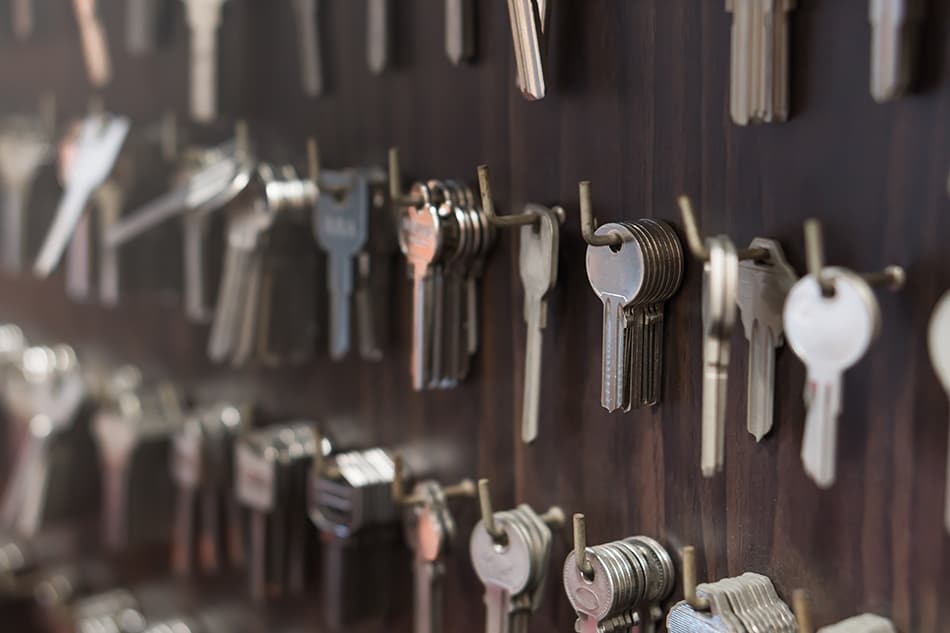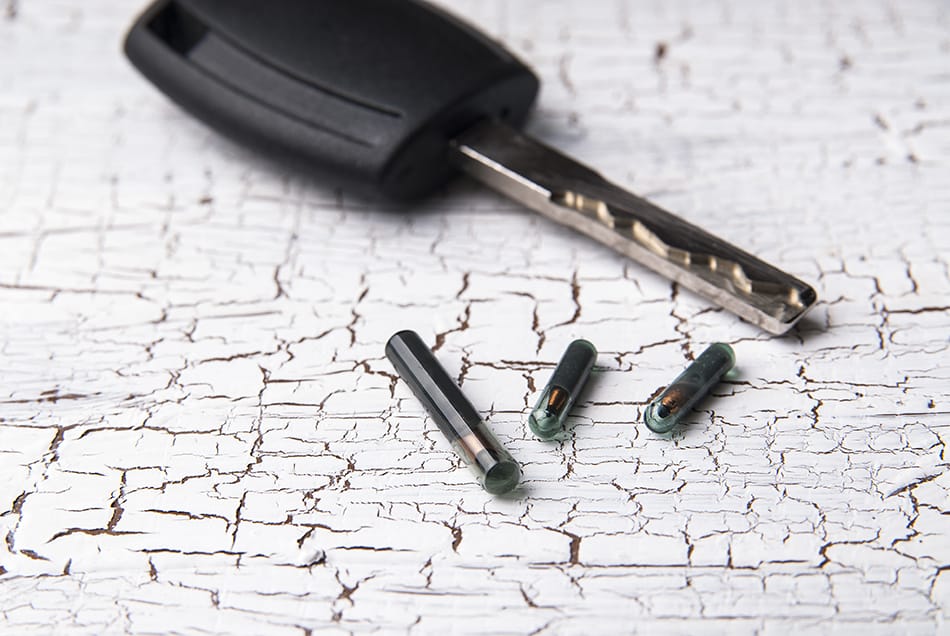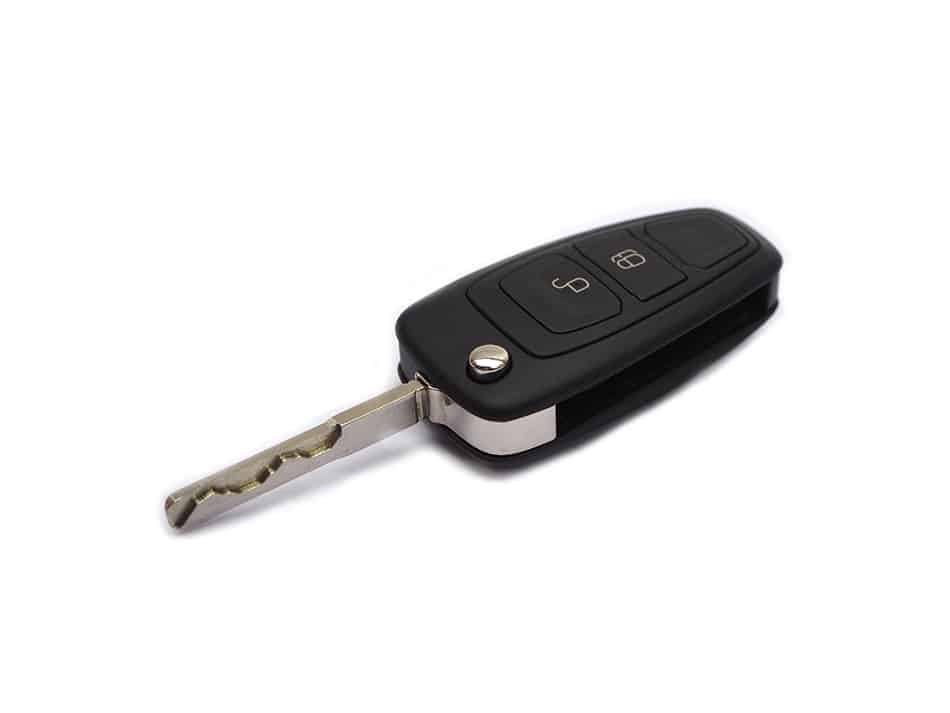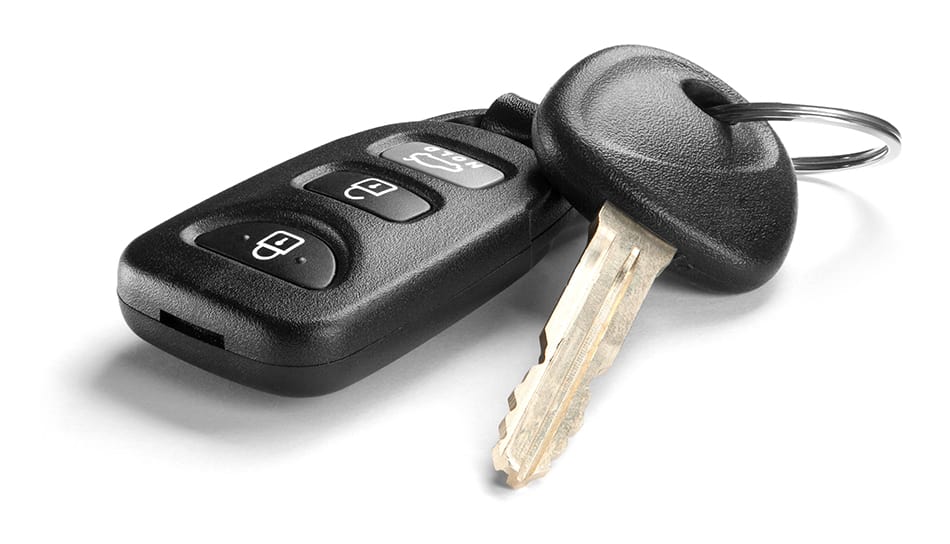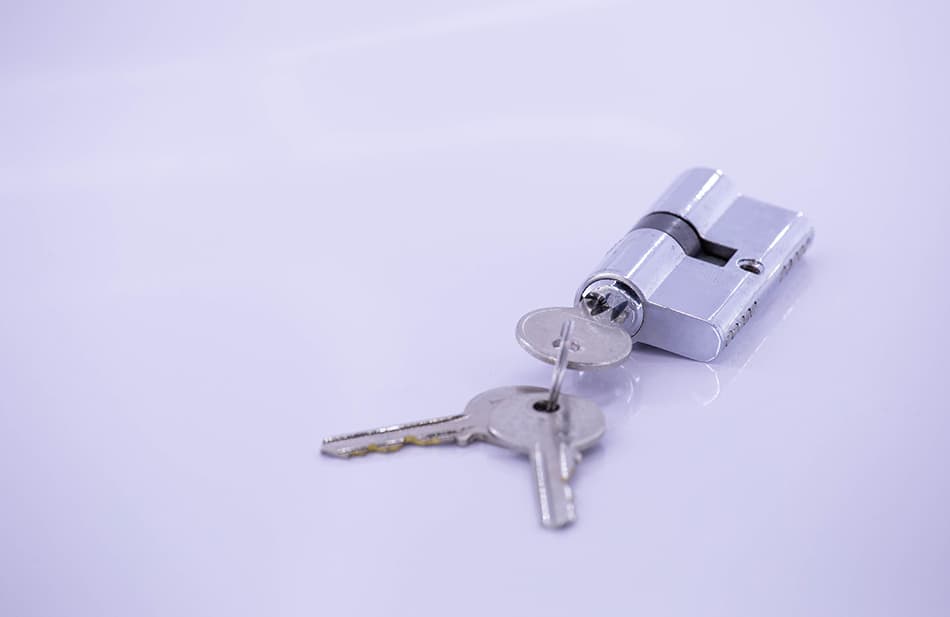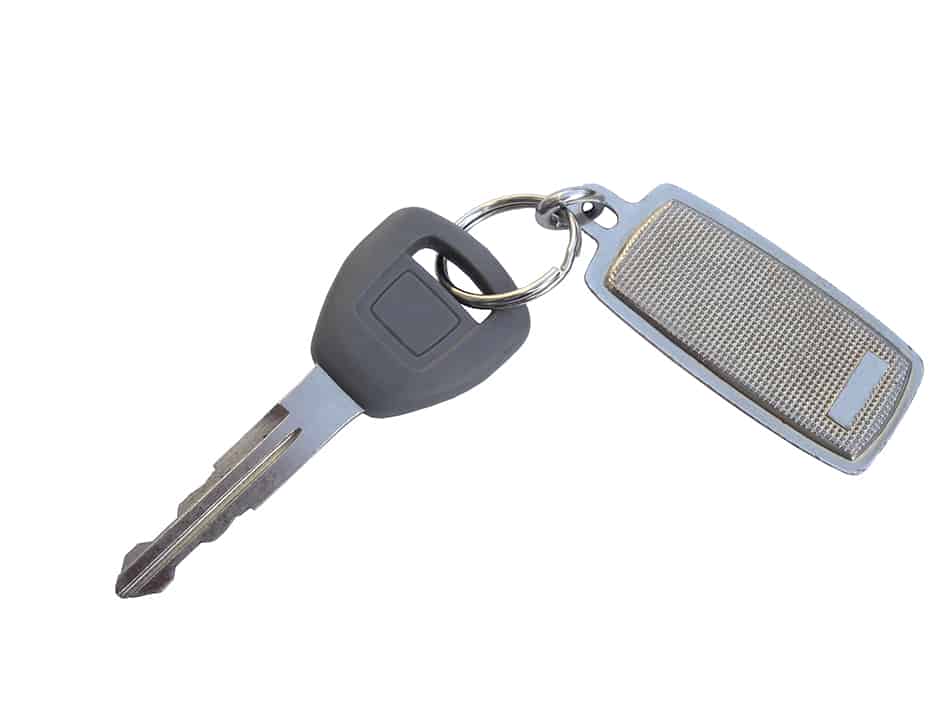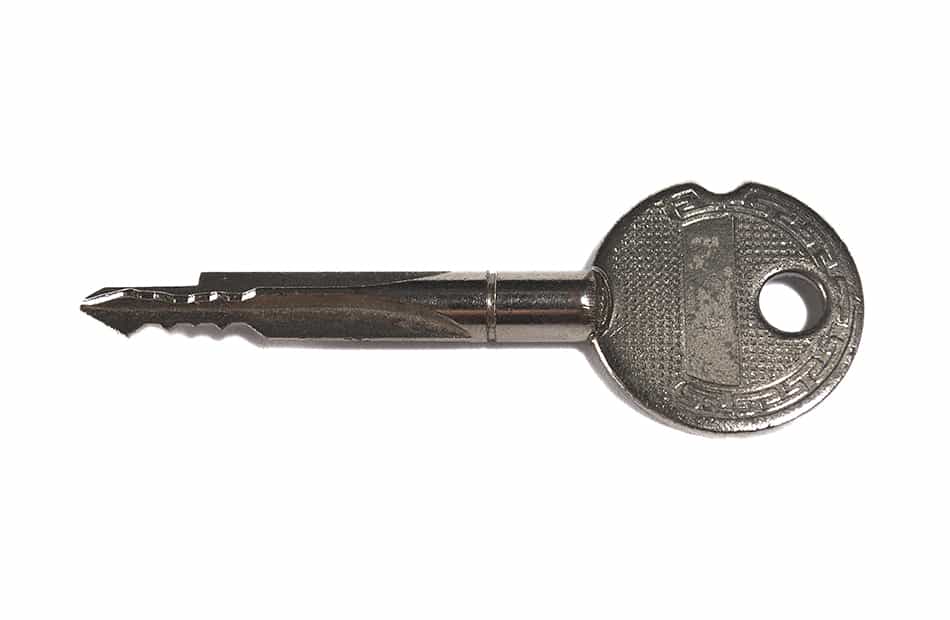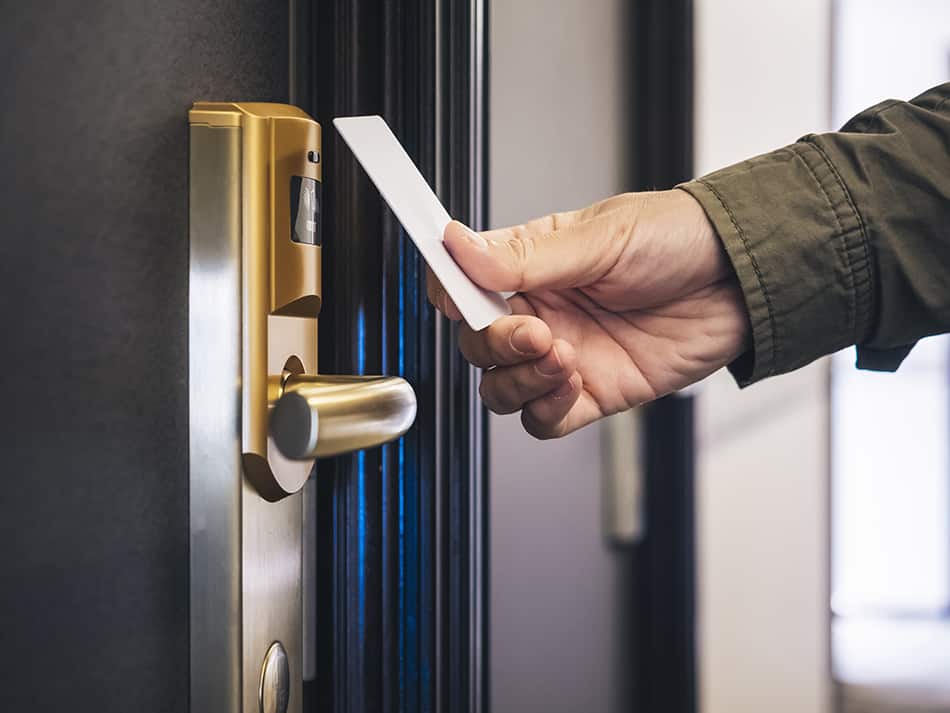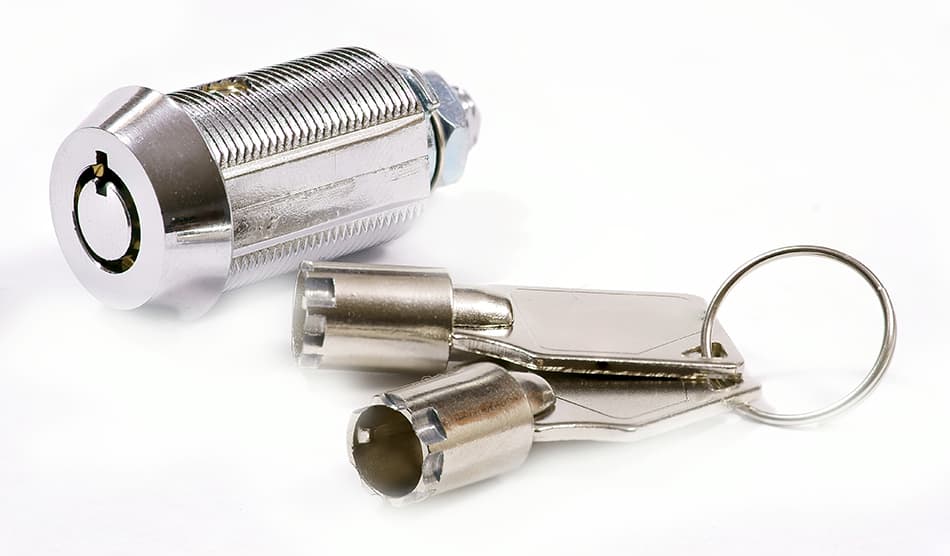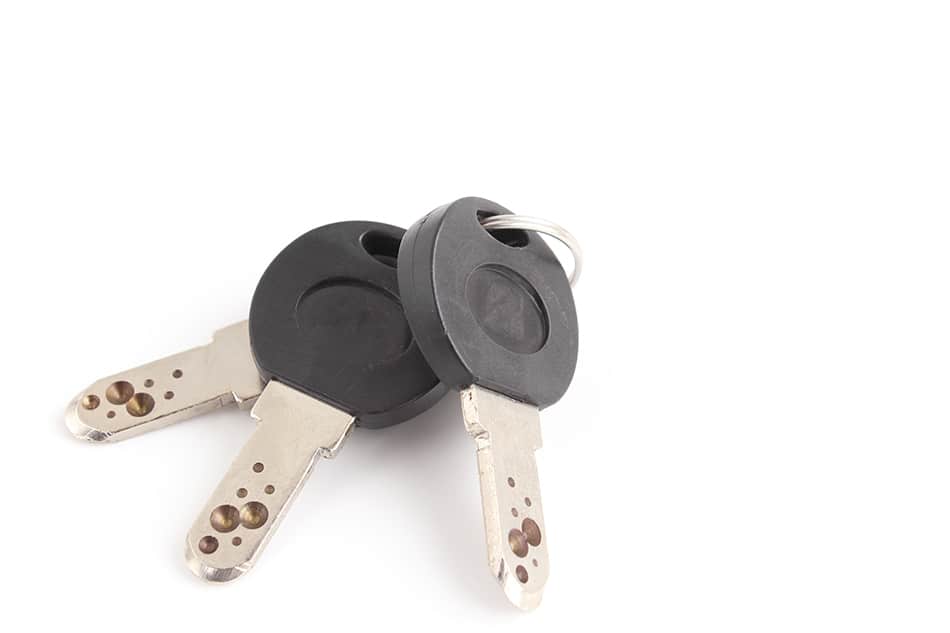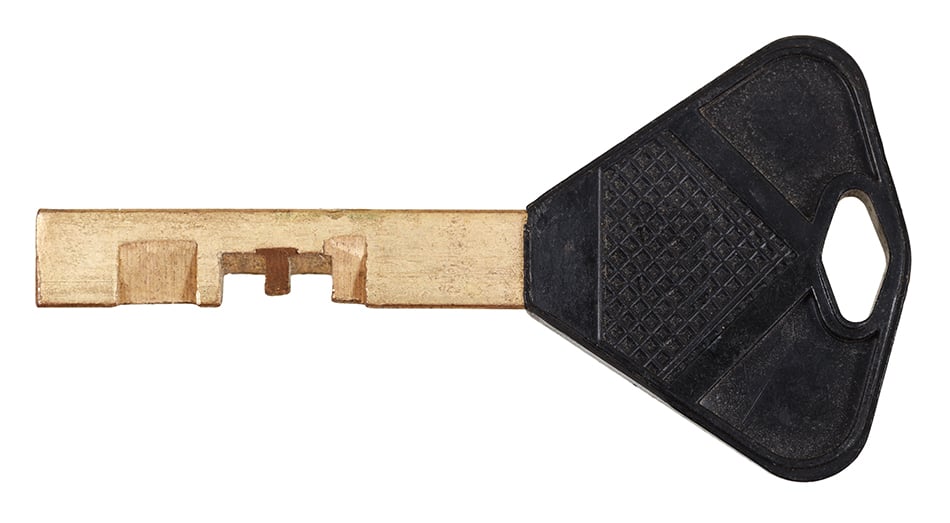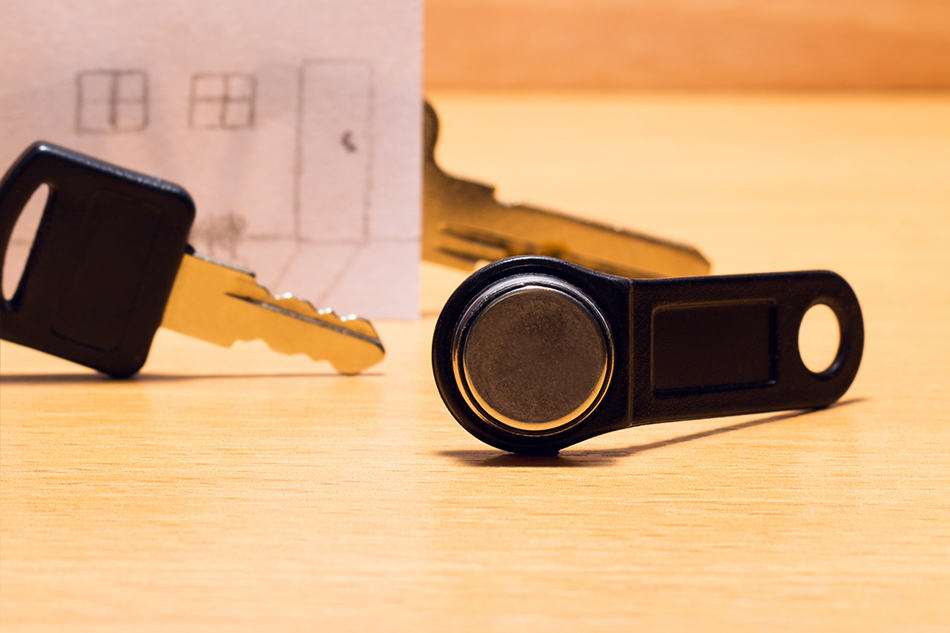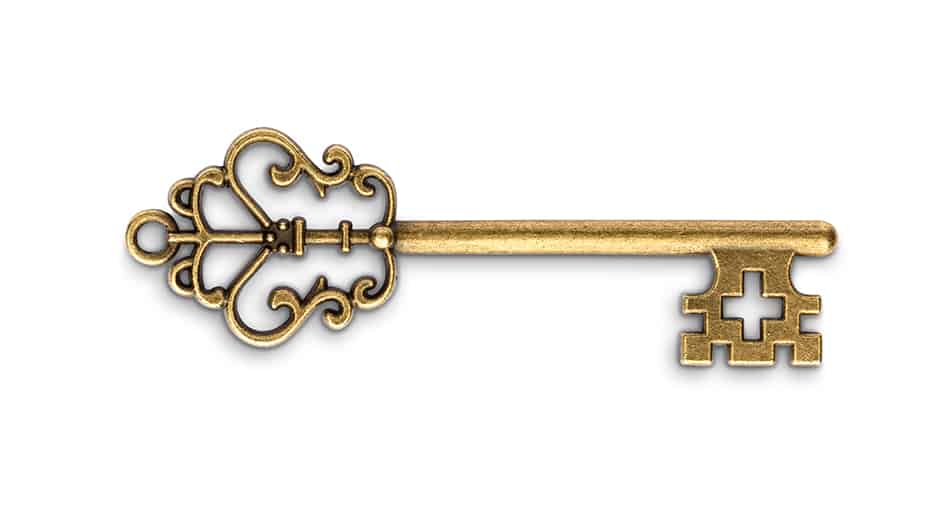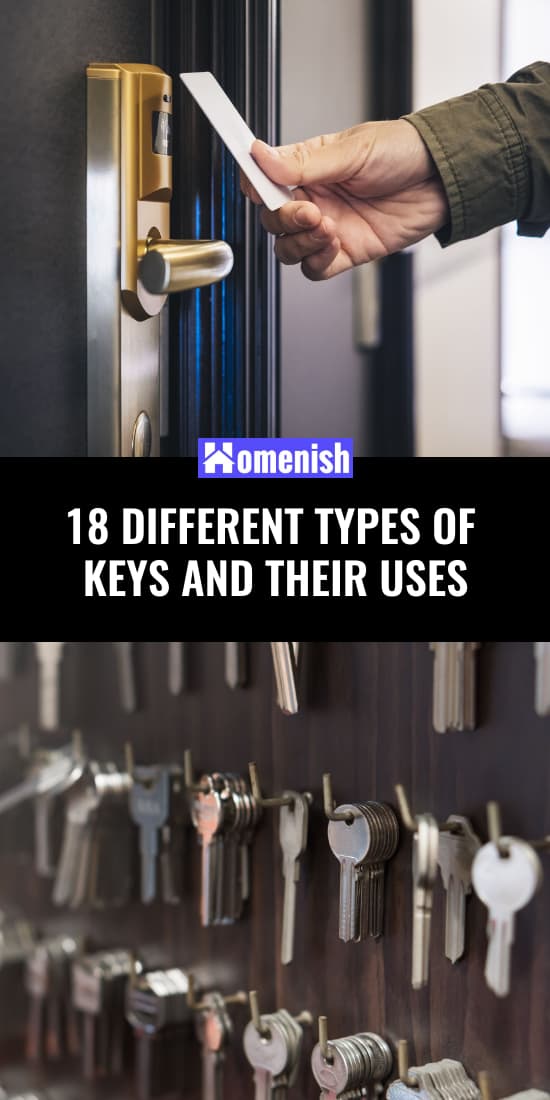Keys are an item that very little thought is given to by most people, which is interesting when most of us will use at least one, if not several keys, every day of our lives.
These tiny, common items are what we put our trust in to protect ourselves and our loved ones from potential intruders or to protect our belongings against theft. To learn more about these essential objects, you should get to know the major parts of a key and use this guide to discover the many different types of keys available and their uses.
Table of Contents
Transponder Key
These keys are commonly used in modern cars and other similar vehicles and can also be known as ‘chip keys.’ The chip in the name is a reference to the fact that these keys have microchips in them that correlate to the code in the ignition of the car.
They work by a radio signal that is triggered when the key is placed in the car’s ignition, and they are incredibly safe because a key will only work with the corresponding car and no other.
These keys are impossible to replicate, increasing their superior safety by reducing theft. If the wrong transponder key is inserted into a car’s transmission, in some cars, this will cause the entire car to completely shut down, thereby preventing a theft attempt.
Due to the fact that these keys are extremely difficult to replicate and cost a lot of money if you want to have a new key cut, they are considered to be among the safest types of keys available. Key cutting machines will fail to replicate these keys, and even a locksmith will need to have access to the vehicle manufacturer’s database in order to find out the code that matches the car to create a new key.
Smart Car Key
These keys are for vehicles, and they work in a similar way to transponder keys. They operate using microchips and radio signals, with several antennas fitted inside the bodywork of the vehicle.
These keys do not require the user to manually insert a key into the ignition to start the car; instead, you can simply press a button in the car to turn on the ignition, which will only work if the key is situated within the car; this could be in the driver’s pocket or in the glove box. If the key is not inside the vehicle, the car will not start.
Smart car keys are also able to lock, unlock, and open the car doors remotely, so you could press the key in your pocket while walking towards your car, and the door will be open and ready for you. These types of keys are incredibly safe because they are extremely difficult to duplicate. To get a replacement or spare smart car key for your vehicle, you will have to go directly to the car manufacturer.
VAT Keys
The ‘VAT’ in this type of key stands for ‘vehicle anti-theft.’ This type of key is very safe and will help to protect you from vehicle theft. You can upgrade most types of car keys to a VAT key if you want to make your car safer and less vulnerable to thieves. These keys have microchips embedded in the keys themselves, with a code that matches the car, making it impossible for the key to be used with another vehicle or for the car to be controlled by a different key.
These keys are very difficult and very expensive to duplicate or replace. This makes them an excellent option for improving the safety of your car but quite problematic if you are prone to losing your keys and need to replace them.
Laser Cut Car Key
These types of keys are keys that, as you might have guessed, are cut with a laser. They are also called ‘sidewinder’ or ‘internal cut’ keys, owing to the fact that they have identically shaped cuts on either side of the key. This means that unlike mechanically cut car keys, you will be able to insert this key into a car’s ignition no matter the way it is facing, as it is identical on either side. Laser-cut keys can usually be identified by the blunt or square edges on the blade part of the key.
Due to the precision in making these keys, they are very difficult to replicate, and therefore they help to reduce incidences of auto theft. Specialized machinery would need to be used to create a spare key or a replacement for one that was lost. Locksmiths would use an internal machine that the blank key is inserted into and simultaneously cut on both sides.
Mechanically Cut Key
Mechanical cut keys are commonly used for older models of cars and for doors on homes and offices. These keys are only cut on one side, with a pattern of ridges that corresponds to the matching lock. They are created using mechanical cutting machines or a die-cast and, unfortunately, are one of the easiest types of keys to replicate and, therefore, one of the least safe.
These types of keys are quite basic in their design, and replicas can be easily made at hardware stores, or the user could even make a copy of the original key themselves by using a self-service key cutter, which is available at many big box stores.
As well as being easy to replicate, these keys can be copied very inexpensively. This means that if you have a mechanically cut key, you need to be very careful that it doesn’t get into the wrong hands, as someone else could make a copy of your key in just a few minutes for less than $10 and would therefore have access to your car, home, office, or safe. If you are concerned about safety issues, it is recommended you upgrade your mechanically cut keys and their respective locks to something more secure.
Valet Key
Valet keys are specifically designed to allow you to use valet services with peace of mind. These types of keys are programmed to be able to open the car doors of your vehicle and start the ignition. They have special coding that disables them from being used on other parts of the car, such as the trunk or the glove box.
This means that these keys are preferable for giving to a valet service, rather than handing over your actual car keys and giving strangers total access to your car. Some people mistake valet keys for car door keys, but these are not the same thing. Car door keys are programmed to only allow the user to open a locked car door, whereas valet keys will let the user start the car and therefore drive it for you.
Double or Four-Sided Key
These keys are the most common types of keys used to secure homes. They can easily be identified by the two or four sets of teeth on different sides of the blade. For the best security, opt for four-sided versions because these are the most difficult to replicate and therefore are an unlikely target for thieves. The multiple lines of teeth on this key also mean that the corresponding lock is more complex, and therefore much more difficult to pick.
If you want to upgrade the level of security in your home on a budget, then switching your locks and keys over to double or four-sided types is the best way to do this. You can dramatically improve the safety of your home for very little expenditure and in a short space of time. As well as being safer, these types of keys are more sturdy than single-sided keys and are therefore much less prone to snapping if they get stuck in a lock.
Keycard Key
Keycard keys look a lot like credit cards, as they are the same size and shape and made from the same material. This is convenient because it means if you have a keycard, you can easily store it in your wallet, in the credit card compartment. Keycards are commonly used in hotels, and this is the environment in that most people will have experienced keycards firsthand. They are also used in government buildings and in large offices, where employees will need access to certain areas.
These keys work by being electronically programmed to be able to open specific door locks. They are very useful in a hotel scenario, as the staff can program any key to open the lock on any room; therefore, it is of no consequence if a visitor loses their key or forgets to return the key at the end of their stay. By comparison, if metal keys were handed out to hotel guests, and a key was lost, a lot of time and money would be wasted in calling out a locksmith.
Keycards are also very good because they offer excellent security. As the locks work electronically, it is impossible to pick the lock, and only the specified keycard that has been programmed to operate a certain lock will be effective. These keys are also very useful in large offices or buildings where staff will need to access some rooms but be kept out of others.
Rather than providing each staff member with various keys, they can each have one key card that is programmed to open the exact doors that they have the acceptable level of clearance to access. It is very quick and easy to program a key card using computer equipment, making keycards efficient and low cost.
Tubular Key
These types of keys also go by the name of ‘barrel keys.’ They are used to open locks that are tubular pin tumbler locks, and these can be found on various types of equipment such as vending machines or on bicycle locks.
These keys are easily identifiable from their unique look. They have a cylindrical shaft that is hollow, and this is what will be inserted into the lock. These keys are difficult to replicate and therefore offer a good level of security. Thieves will be discouraged from attempting to break into your property when they notice that a barrel key is required.
Dimple Key
These types of keys can be easily identified by the numerous dimples along the blade of the key. The dimples will be of various sizes and will correspond to protruding pins within the lock. In order to work, the key will be inserted into the lock, and if the dimples line up correctly with the pins, then the lock will be released.
Dimple keys are the same on both sides, which means that these keys work regardless of the way you insert them into the lock. This makes opening the door easier because you won’t have to fuss around with the way you are holding the key and grants you quicker access. These keys are predominantly used in home security as an added measure to protect property against intruders.
Abloy Key
This key type is used to unlock disc tumbler locks. They work by rotating the enclosed discs, which will release the lock when they are correctly aligned.
These keys are almost unknown in some parts of the world, but in others are incredibly popular. In fact, in Finland, almost every home is protected by abloy keys as standard practice. Abloy keys are impossible to pick, thanks to the fact that they are not spring-loaded like most other locks. This makes them incredibly secure and a good choice if you are looking to upgrade the security system in your home.
Primary Key
A primary key, as the name might give away, is a key that operates as the main key in a building, being able to open every door. While there will be other keys that correspond to the specific locks, the primary key will be able to unlock all of them.
This type of key is great in office buildings, where each employee may have their own key that corresponds only with their office lock; the primary key can be held by a manager so they can access any of the offices in the building in the event of an emergency. As the primary key can unlock all of the locks in a building, it carries great responsibility and, therefore, should be kept in a safe place to prevent it from getting into the wrong hands.
Paracentric Key
These keys are extremely uncommon in everyday life, and in fact, one of the only places they are commonly utilized is in prisons. A paracentric key can be identified by having a contorted blade on one side, and a blade with several tiny teeth lined next to it.
These locks work to unlock paracentric locks and were first introduced to discourage lockpicking because they are very difficult to pick. Their popularity in prison owes to the belief that these locks could not be picked and therefore kept prisoners securely locked up; however, some people have developed ways to pick these locks and access them without the use of a key.
Magnetic Key
These keys can contain any number of magnets, which depending on their size and the way they are facing, will cause tumblers within a lock to line up and release. Magnetic keys use passive systems that require no electronics. They can be used on various types of locks, including cylinder locks, deadbolts, and lever locks.
As the combination of magnets used needs to be so specific to operate the lock, these keys are considered to offer a good level of security. Locks that use magnetic keys cannot be picked because physical force will not move the tumblers. These keys are very difficult to replicate, which adds to the secure quality of them.
Skeleton Key
A skeleton key is also known as a ‘passkey’ and might also be incorrectly called a ‘primary key.’ The confusion comes from the fact that a skeleton key is a type of primary key because it can open several locks, but skeleton keys are only used in conjunction with warded locks. Skeleton keys have a serrated, protruding part towards the tip of the shaft, and this has often been sanded down to enable it to open a variety of locks.
Warded locks, for the most part, are no longer in use because they can be picked quite easily and are therefore not considered a good form of security, which has therefore led to the decline of skeleton locks.
Some older homes may still have warded locks on their doors, but it is recommended that additional locks are added to improve the level of security. Locks that open via skeleton keys only have a lever or a spring as their internal active component, and therefore can be manually picked with relative ease.
Cruciform Key
This type of key can also be called a ‘cross key,’ which is a reference to the profile of the key that takes an ‘x’ shape. These keys are most commonly found in industrial settings, where hardwearing and reliable keys are important. Cruciform keys are very strong and efficient, and they are also compact, which lends them well to use in a variety of situations. Cruciform keys have four sides that are all flattened and feature teeth on various patterns along each edge.
The advantage of this type of key is that the unusual shape makes lockpicking very difficult, so you can have peace of mind that your property is well protected. The disadvantage of these keys is that they are quite easy to duplicate, so it is essential that cruciform keys be kept in a safe place and prevented from getting into untrustworthy hands.
Common Uses for Keys
Homes
If you live in a house, then it’s safe to say you have a key. We rely on keys to keep us and our belongings safe, locking up our properties against potential intruders or thieves. It’s likely that you’ll have a whole set of keys that operate locks for your house: keys for the front door, the back door, the windows, the garage, the gate, and maybe even keys for a shed or outhouse.
Considering that most people regard their homes as their safe place, where their children sleep, where they keep their possessions, and where memories are made, it’s worth investing in keys that offer a good level of security to give you peace of mind and adequate protection.
Offices
Offices will be secured via locks that are operated with keys, and in larger offices, a whole series of keys might be needed to access an office building.
Padlocks
Keys are used to open padlocks, which can be used to protect any number of spaces or objects. People who visit a gym may keep a padlock and key in their gym bag to use with lockers to keep their items safe while they work out. You might use a padlock on a gate on your property, or you can find tiny padlocks that secure personal diaries and journals.
Padlocks are fairly easy to compromise. The locks can be picked without too much trouble, or the padlock keys can be easily replicated. If someone really wants to break into a padlock, they could just use a bolt cutter or an angle grinder to completely remove the lock without needing to pay attention to the key part at all.
Cars
All modern cars are operated with keys. Car keys serve not only the purpose of locking the car and keeping it safe from intruders, but they are also used to start the ignition and drive the vehicle.
Safes
Safes can be operated with keys or with pre-programmed codes. These are impenetrable boxes that house important or valuable items. They are commonly found at the back of a wardrobe in hotels, in the back office of bars and restaurants, or in hidden locations within people’s homes. More complex and intelligent safes can be found in places such as banks, which will hold large amounts of money or small valuables like jewelry.
